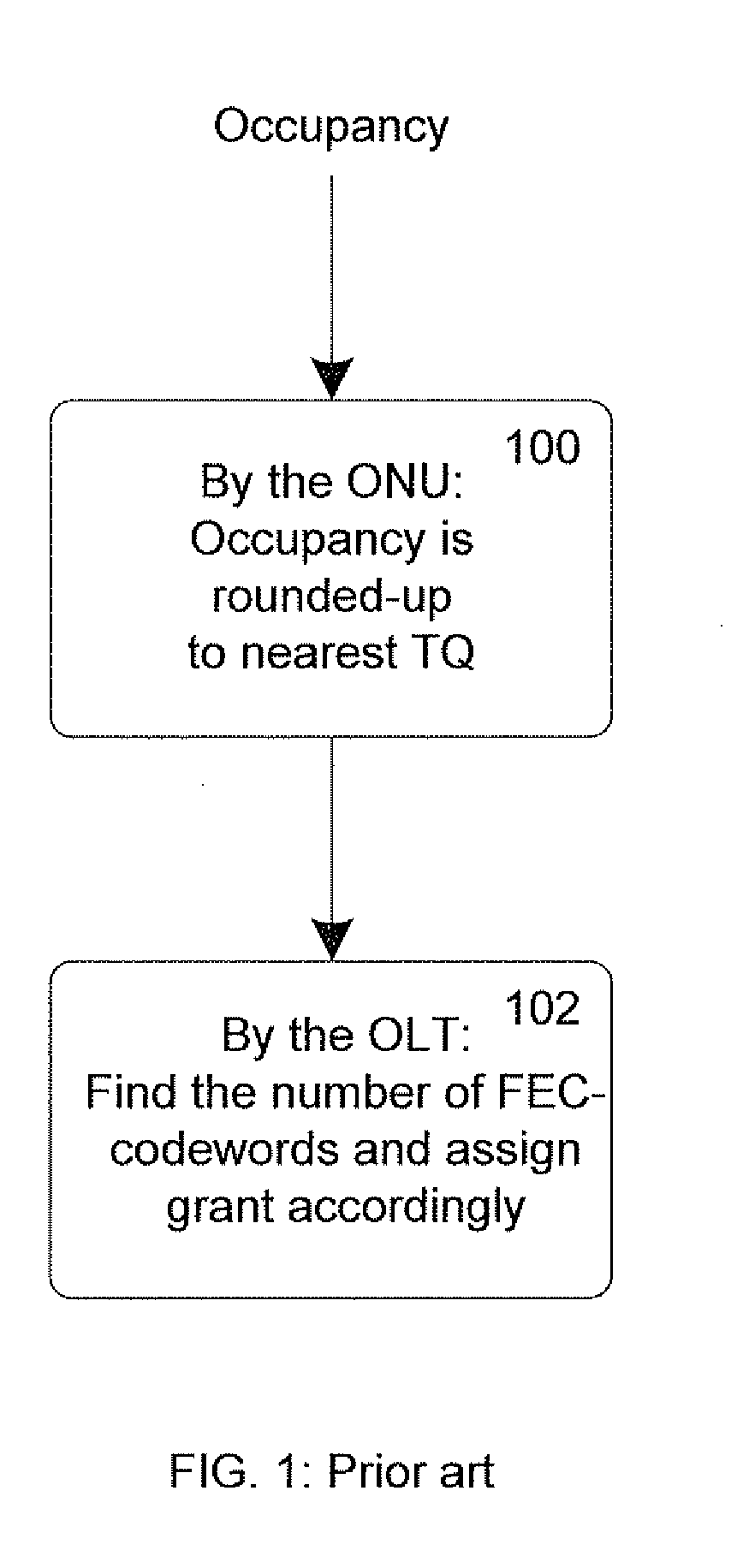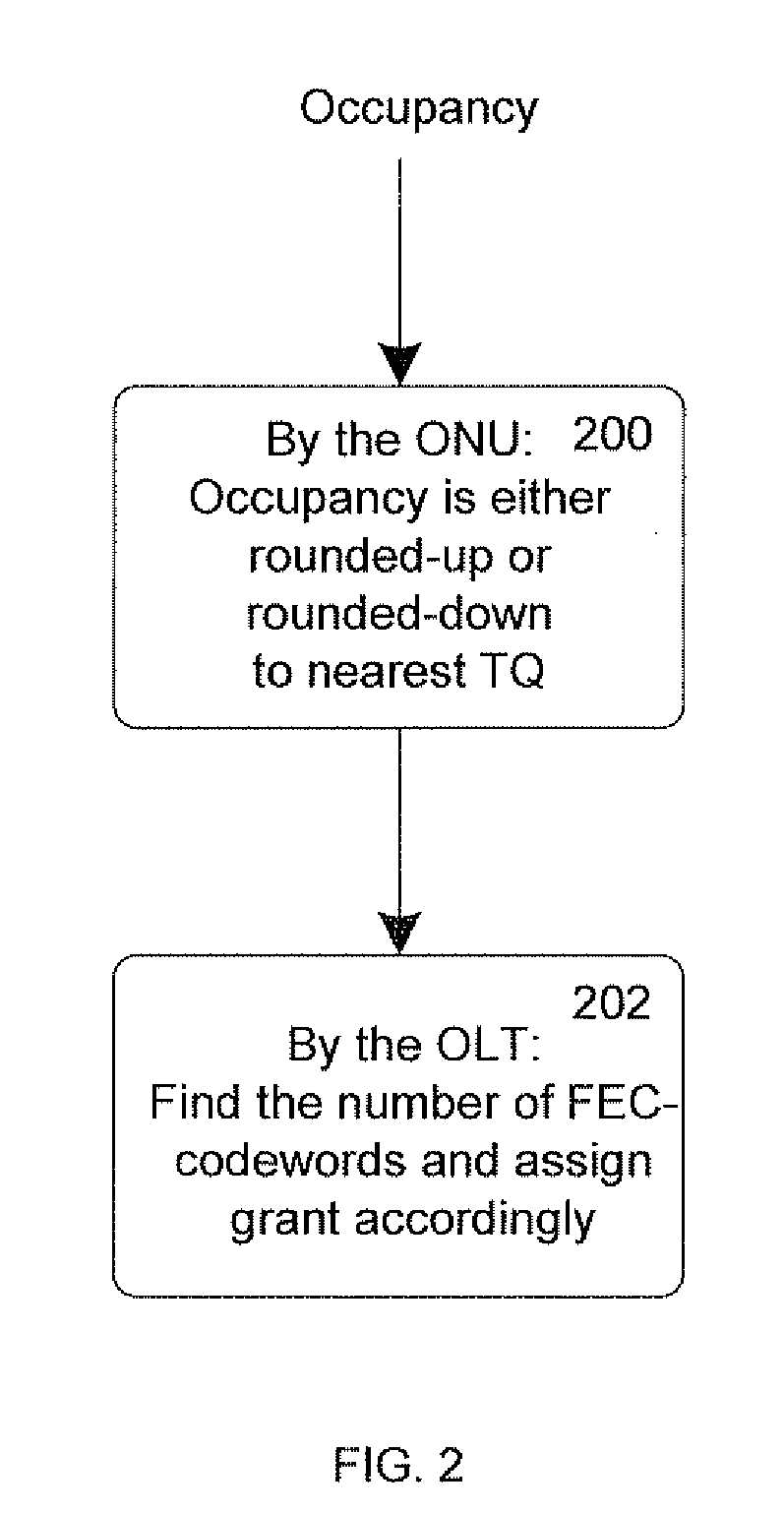Reporting mechanism for efficient upstream bandwidth utilization in a 10g epon
a reporting mechanism and upstream bandwidth technology, applied in multiplex communication, code conversion, coding, etc., can solve problems such as wasted bandwidth, and achieve the effects of efficient upstream bandwidth utilization, and increased upstream bandwidth utilization
- Summary
- Abstract
- Description
- Claims
- Application Information
AI Technical Summary
Benefits of technology
Problems solved by technology
Method used
Image
Examples
Embodiment Construction
[0021]FIG. 2 shows a report-grant mechanism according to the invention, implemented exemplarily in 10G EPON. In contrast with step 100 of FIG. 1 where the ONU always rounds-up a report in order not to request too little, in step 200, the ONU may, if advantageous, round-down the queue occupancy value to the nearest TQ value (also referred to as “a “first report value”). In step 202, the OLT handles the report in the same exact way as in step 102, i.e. it checks the reports from all ONUs and assigns respective grants to the ONUs in FEC codewords that accommodate report values.
[0022]FIG. 3 shows details of step 200 in FIG. 2. In step 300, the queue occupancy is converted to TQ and rounded-down to the nearest TQ units (the first report value), and then the number of FEC codewords (or “FEC codeword value”) necessary to carry a data payload of this size is calculated by rounding-up the result to the nearest FEC codeword unit. In step 302, the queue occupancy is divided by the FEC codeword...
PUM
 Login to View More
Login to View More Abstract
Description
Claims
Application Information
 Login to View More
Login to View More - R&D
- Intellectual Property
- Life Sciences
- Materials
- Tech Scout
- Unparalleled Data Quality
- Higher Quality Content
- 60% Fewer Hallucinations
Browse by: Latest US Patents, China's latest patents, Technical Efficacy Thesaurus, Application Domain, Technology Topic, Popular Technical Reports.
© 2025 PatSnap. All rights reserved.Legal|Privacy policy|Modern Slavery Act Transparency Statement|Sitemap|About US| Contact US: help@patsnap.com



